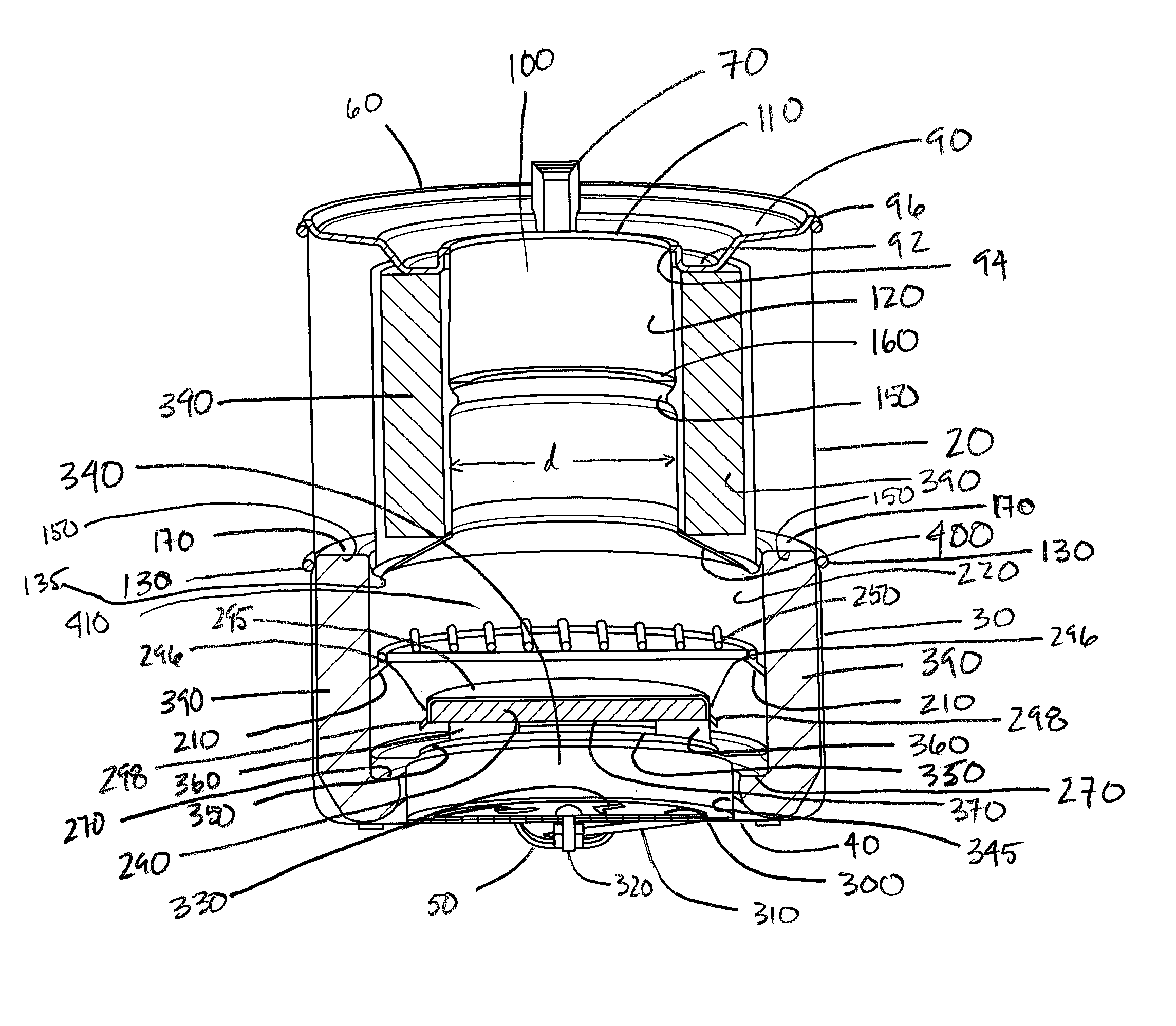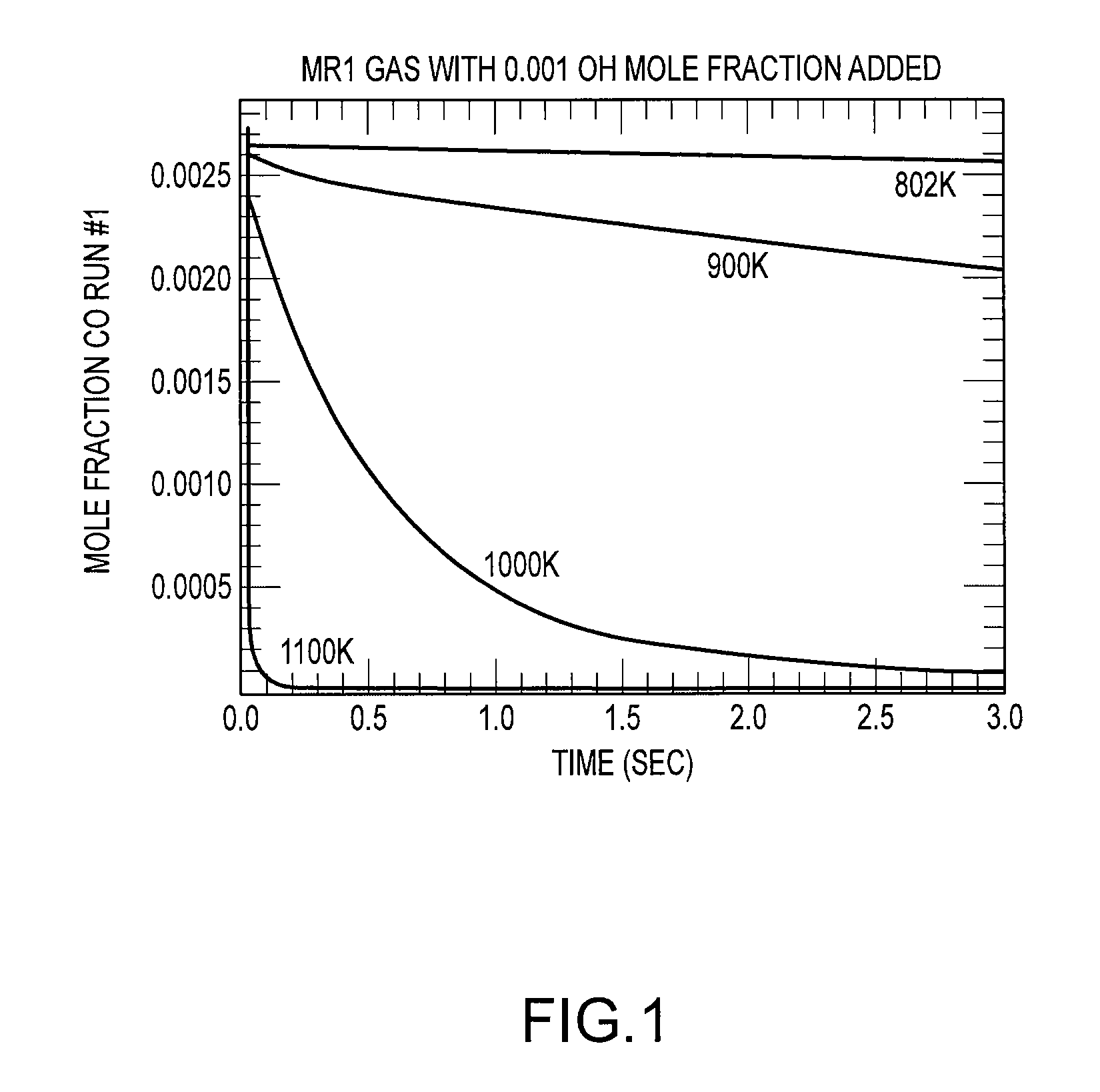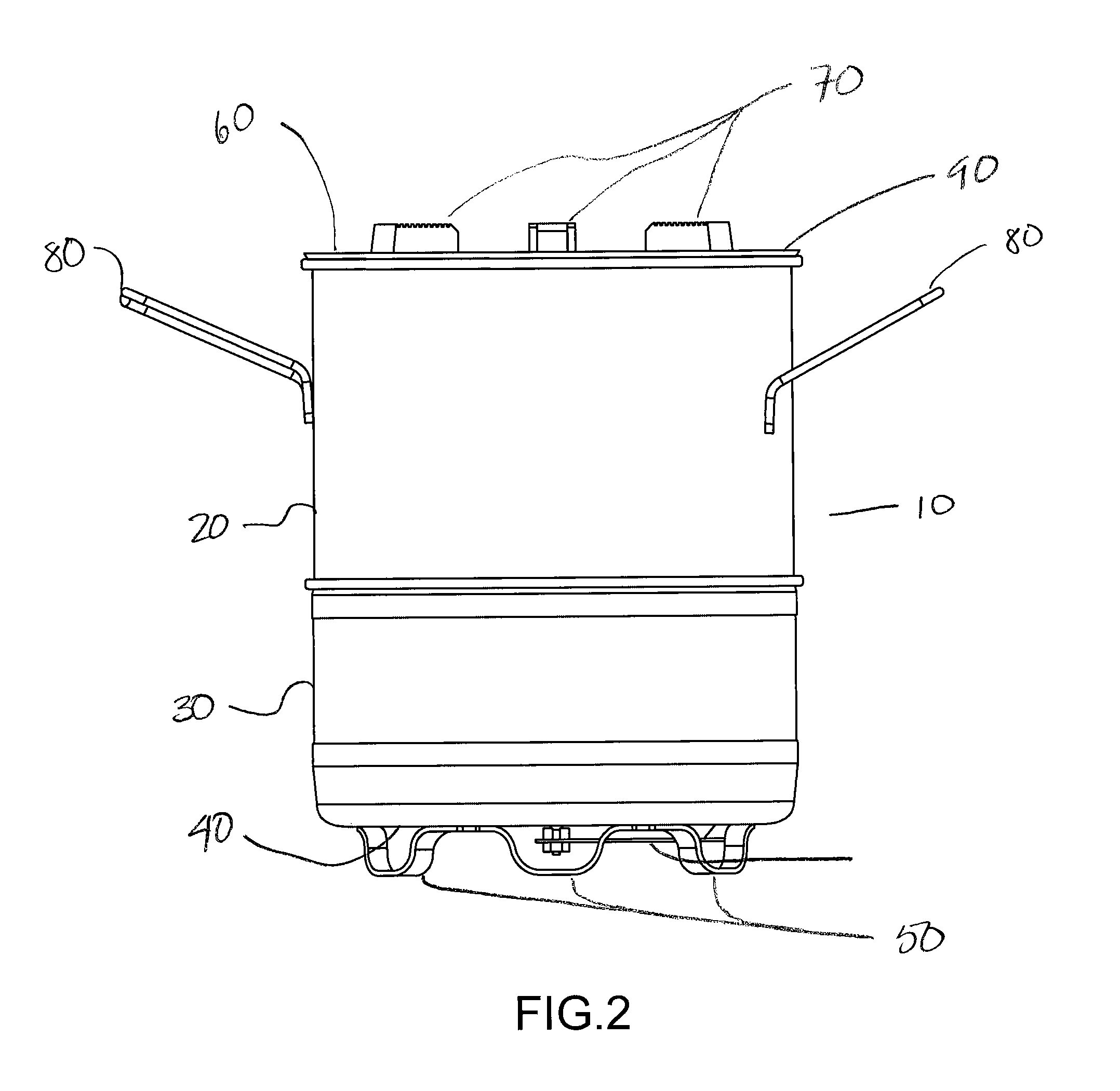Combustion chamber for charcoal stove
a combustion chamber and charcoal stove technology, which is applied in the field of combustion chambers for charcoal stoves, can solve the problems of increasing co destruction, co oxidation, and “co spikes” in biomass stoves, and achieves the effects of reducing the internal radius/cross-section of the upper combustion chamber, increasing the fuel bed temperature, and reducing the radius
- Summary
- Abstract
- Description
- Claims
- Application Information
AI Technical Summary
Benefits of technology
Problems solved by technology
Method used
Image
Examples
example 1
Fuel Bed Temperature
[0087]The present stove embodiment has been compared to the KCJ stove. To measure the temperature bed of the stoves, a thermocouple was placed within the coal beds of the stove during operation. The present embodiment stove may offer an addition 10% increase in thermal efficiency over the KCJ stove. The present embodiment charcoal stove burns at much higher temperatures than the KCJ stove. For example, the top of charcoal fuel bed of the present stove reaches temperatures estimated at greater than 1100° K [˜830° C.], while the KCJ stove's fuel bed reaches temperatures of about 900-1000° K [˜630-˜730° C.]. The present charcoal stove shows about a 10% increase in burn rate and approximately double the airflow rate.
example 2
CO Emission and Thermal Efficiency
[0088]The presently embodied charcoal stove shows a reduction in CO emission. Stove emissions were measured using testing protocols described in DeFoort, M. D., L'Orange, C., Kreutzer, C., Lorenz, N., Kamping, W, and Alders, J., Stove Manufacturers Emissions &Performance Test Protocol (EPTP). See Appendix A. Briefly, The EPTP takes approximately 1.5-2 hours and consists of three phases performed three times in sequence with modifications for charcoal stoves. Phase 1, the cold-start (CS) test, is a high-power test wherein the tester begins with the stove at room temperature and uses a pre-weighed bundle of wood or other fuel to heat a measured quantity of water to 90° C. in a standard pot. Phase 2, the hot-start (HS) high-power test, immediately follows the first test, and is performed while the stove is still hot. In the hot-start, the tester first replaces water heated in phase 1 with a fresh pot of cold water at the established starting temperatur...
example 3
Chemical Kinetics Modeling of CO Oxidation
[0092]Compared to the KCJ stove, the present stove embodiment runs at higher temperatures, has increased oxygen flow, and longer residency times. Stove flow rates may be measured by standard measurements of oxygen and carbon balance.
[0093]The higher burn rate has an obvious effect on time to boil. Assuming similar thermal efficiencies, the higher burn rate supplies more energy to heat the pot. Increasing temperature is also the most direct way to increase both radiative and convective heat transfer rates to the pot. Convective transfer is also helped by the increased airflow in the present stove embodiment.
PUM
 Login to View More
Login to View More Abstract
Description
Claims
Application Information
 Login to View More
Login to View More - R&D
- Intellectual Property
- Life Sciences
- Materials
- Tech Scout
- Unparalleled Data Quality
- Higher Quality Content
- 60% Fewer Hallucinations
Browse by: Latest US Patents, China's latest patents, Technical Efficacy Thesaurus, Application Domain, Technology Topic, Popular Technical Reports.
© 2025 PatSnap. All rights reserved.Legal|Privacy policy|Modern Slavery Act Transparency Statement|Sitemap|About US| Contact US: help@patsnap.com



